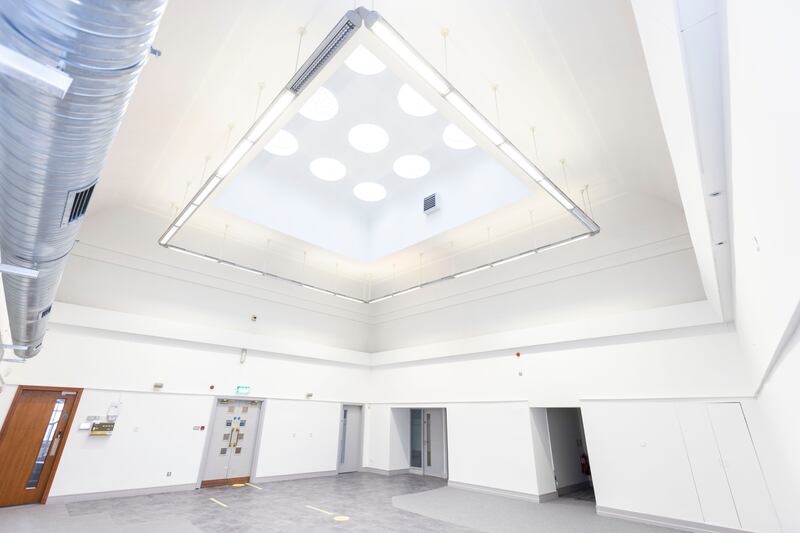A 1850s former bank building on James Street in Dublin, mentioned in James Joyce’s Ulysses, will reopen on Friday as an exhibition and work space for local artists.
The protected structure at the corner of James Street and Watling Street was one of 88 Bank of Ireland branches which closed more than a year ago.
The bank, which is part of the Digital Hub’s lands, has since undergone a €100,000 restoration and redevelopment project so it can be repurposed as an artists’ space with local creative collective FLUX opening the first exhibition on Friday.
The exhibition, which runs until May 19th will feature artworks by 35 FLUX studio members, including painting, photography, theatre and video production, glass art and sustainable fashion.
RM Block
A range of creative businesses will also be on display, such as Izzy Wheels, a company which designs removable wheelchair covers, founded by sisters Ailbhe and Izzy Keane and inspired by Izzy, who was born with Spina Bifida and uses a wheelchair.
Later in the month, FLUX will hold Sustainability in Fashion, an event to raise awareness of sustainable clothing and the effects of fast fashion on the environment, featuring sustainable fashion designers including Sharon Sweeney.

The bank building opened in 1853 as a branch of the Dublin Savings Bank also known as St James’s Gate Bank. Guinness acquired a lease on the site in the 1890s, and changed its use to a waiting room for visitors to the brewery, which is how it features in Ulysses when tea merchant Tom Kernan “turned and walked down the slope of Watling Street by the corner of Guinness’s visitors’ waiting room”.
Later in the 20th century the building returned to banking use with Bank of Ireland holding a long-term lease on it since 1976.
Work to convert the building for artists largely involved the removal of 20th century interventions to the building, including a false ceiling which hid the original dome, Digital Hub chief executive Fiach Mac Conghail said.
“It has one of those gorgeous domed atriums that floods natural light into the room during the day. The work involved removing the false ceiling and partitions and creating an open public space, with white walls so artists can hang work.”
Digital Hub lands have been identified for transfer to the Land Development Agency (LDA) with their redevelopment for housing expected to start from 2025. However, Mr Mac Conghail said, the bank building may be retained cultural uses within the new residential community.
“A lot of banks around the city have been turned into restaurants or bars, but the creative industries are in need of space, and the Arts Council themselves would say a lot of artists have been pushed out of the city, with few places now to show work. Having this as a creative space could be a real attraction for creating a community around the new housing.”
















